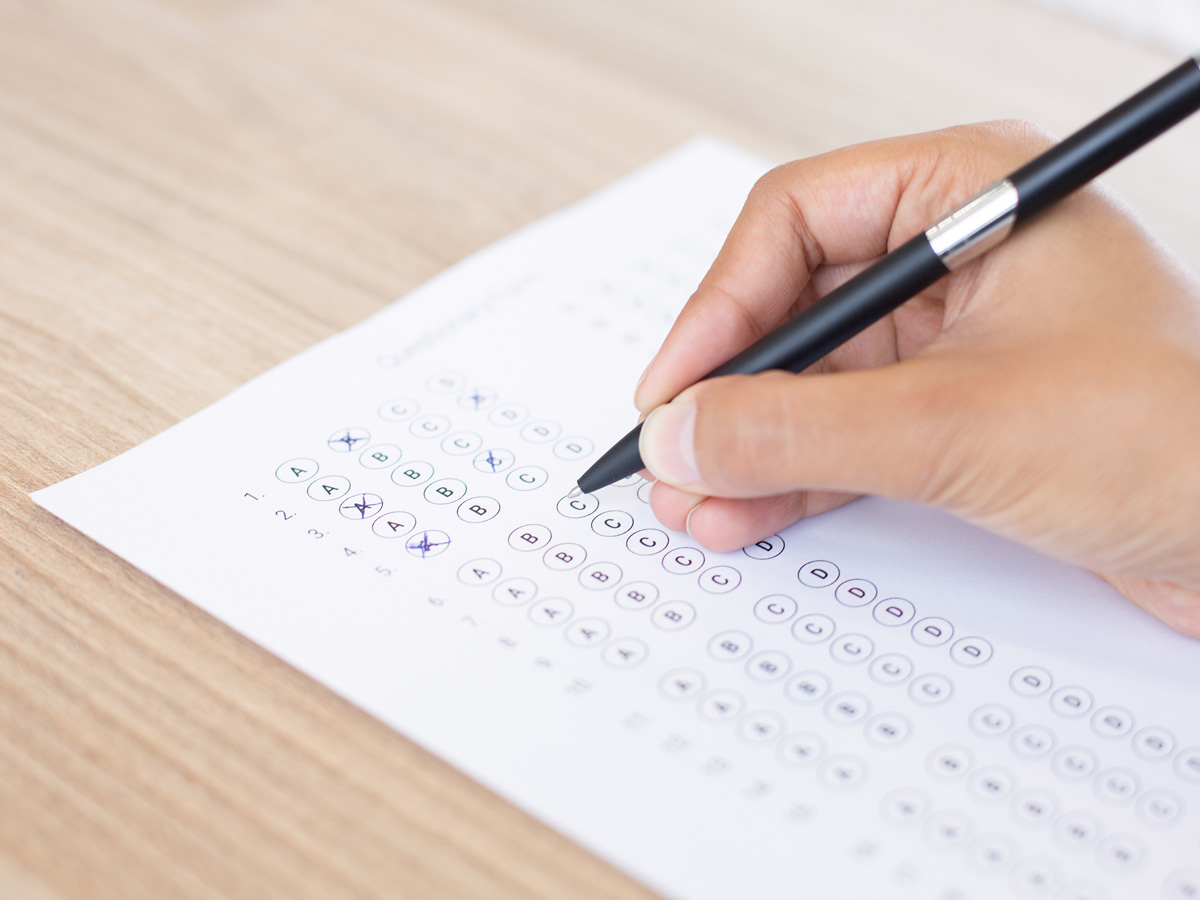Blog > Evaluate learners' learning

Assess learners’ learning

Written by Rosaria
How do you know that your learners learned what you wanted them to learn? How do you assess their knowledge or skills? What’s the best way to evaluate an assignment or a module completion?
Where do we start?
As you can imagine, these questions have no single “right” answer. It really depends on many factors. First of all, it will depend on what your learners are supposed to learn. Was it a series of words in another language? Was it a complex physics theory? Did they need to learn how to use the latest software your employer installed on their computer?Therefore, one of the first things you have to consider, before even thinking of the evaluation, are your learning objectives. We are going to refer here mainly to the Bloom’s Taxonomy of learning objectives. The learning outcomes that you set at the beginning should describe what the learners will have achieved and can demonstrate at the end of your course.
Taxonomies of learning objectives
According to Bloom’s taxonomy, there are 3 different learning domains: cognitive, affective and psychomotor.
The cognitive domain
The cognitive domain concerns the development of our intellectual skills. It is composed of 6 levels, in order of increasing complexity:
- Knowledge (remember)
- Comprehension (understand)
- Application
- Analysis
- Synthesis
- Evaluation
The cognitive domain is the “easiest” to measure compared with the affective and psychomotor domains. Here’s an example of questions/assignment for each level of the cognitive domain:
| LEVEL | EXAMPLE |
| Knowledge | List the 8 planets of the solar system |
| Comprehension | Explain the reasons of climate change |
| Application | Use javascript to create a drag and drop interaction |
| Analysis | Which events could have happened if Germany had won WWII? |
| Synthesis | If you had unlimited resources, how would you deal with pollution? |
| Evaluation | What criteria would you use to evaluate a candidate for this job position? |
The affective domain
The affective domain concerns the motivation, feelings, attitudes and emotions of the learner. It is composed of 5 levels, in order of increasing complexity:
- Receiving
- Responding
- Valuing
- Organising
- Characterising
The learning outcomes in the affective domain could go from the simple awareness to selective attention. The affective domain outcomes are therefore quite difficult to evaluate. How do you know that your students are motivated? How do you know they value something? The answer is probably that the instructors need to design their courses so as to integrate the affective domain and foster students motivation and participation. They can, when possible, set up regular feedback sessions/interactions with the learners ; encourage course participants to evaluate and select values on their own ; promote hands-on experience or collaborative activities.
The assessment of the affective domain relies mostly on the instructor’s observations and perceptions, or students self-reporting statements. Here’s a few examples:
| ASSESSMENT | EXAMPLE |
| Observation of behavioural evidence and indicators | “The participant shows examples of professional behaviour” |
| Measure before and after attitudes and values | Administer a survey or questionnaire |
| Self-reflexion | Ask student to fill journals where they record participation, results, responses, feelings, perceptions, or reflections about outcomes of lessons |
| Specific rubric to assess affective domain competences | Use descriptions of specific competencies, such as integrity, empathy, respect, etc. Use a competent/not competent scoring |
The psychomotor domain
Finally, the psychomotor domain concerns the learning of physical skills. In Bloom’s and Harrow’s taxonomy there are 7 levels:
- Perception (sensory guiding of motor activity)
- Set (feeling ready to act)
- Guided Response (beginning to learn complex skills)
- Mechanism (developing basic proficiency)
- Complex Overt Response (performing with advanced skill)
- Adaptation (modifying movement to meet special circumstances)
- Origination (creating situation-specific movements)
Psychomotor assessments range from identifying practical skills to designing practical test or developing skill assessment forms. The assessment is made through specific rubrics, conceived especially as a checklist to evaluate practical skills and activities. Here’s some examples* for rubrics criteria for the psychomotor domain levels:
| LEVEL | RUBRIC CRITERIA’S EXAMPLE |
| Perception | “Recognizes malfunction by sound of machine” |
| Set | “Knows mechanical sequence of steps in varnishing wood” |
| Guided | “Applies first aid bandage as demonstrated” |
| Mechanism | “Operates a slide projector” |
| Complex Overt Response | “Performs skillfully on the violin” |
| Adaptation | “Adjusts tennis play to counteract opponent’s style” |
| Origination | “Creates a dance step” |
*These examples were retrieved from theHoB.net
In conclusion
Assessments are a way of evaluating the knowledge and skills acquired during a learning activity. The type of assessment must take into account each of your learning objectives, so be coherent! Make sure to set measurable outcomes. Additionally, in order to measure the achievement of all your objectives, several types of assessments could be required, at different times.
Sources, references and links
Other than speaking for my personal experience, all the references and resources that I used to write this article are available here:
- Educational Taxonomies with examples, example questions and example activities, in theHoB.net: A Site for Teachers & Educators
- Understanding the basics of Bloom’s Taxonomy application in eLearning, in the Eidesign blog
- James, M. (2006). Assessment, teaching and theories of learning. Assessment and learning, 47, 60.
- Pierre, E., & Oughton, J. (2007). The Affective Domain: Undiscovered Country. College Quarterly, 10(4), 1-7.
- Ramalingam, M., Kasilingam, G., & Chinnavan, E. (2014). Assessment of learning domains to improve student’s learning in higher education. Journal of Young Pharmacists, 6(1), 27.
- Yatimah, D. (2020). Implementation of psychomotor assessment on life skills learning program package. Humanities & Social Sciences Reviews, 8(1), 171-176.
- Wu, W. H., Kao, H. Y., Wu, S. H., & Wei, C. W. (2019). Development and Evaluation of Affective Domain Using Student’s Feedback in Entrepreneurial Massive Open Online Courses. Frontiers in psychology, 10, 1109.
Related Articles
Related
Create a fill-the-gaps quiz with Storyline
Articulate Storyline360 is a great authoring tool (I use it myself for my learning projects) and it has a lot of fantastic built-in features and quiz types. In particular you can easily create graded questions such as true/false, multiple choice, matching...
What to do and what to avoid when creating an e-learning storyboard
As we’ve seen in the previous article here, there are several types of storyboard and the format used depends on the context. Whatever the choice, here is a list of mistakes to avoid and tips to remember when developing effective storyboards. What to avoid Include too...
Types of Storyboards for e-learnings
There are several storyboard formats and their use depends on what you want to achieve. We will look at three types of storyboard for three different contexts and how to use them.
